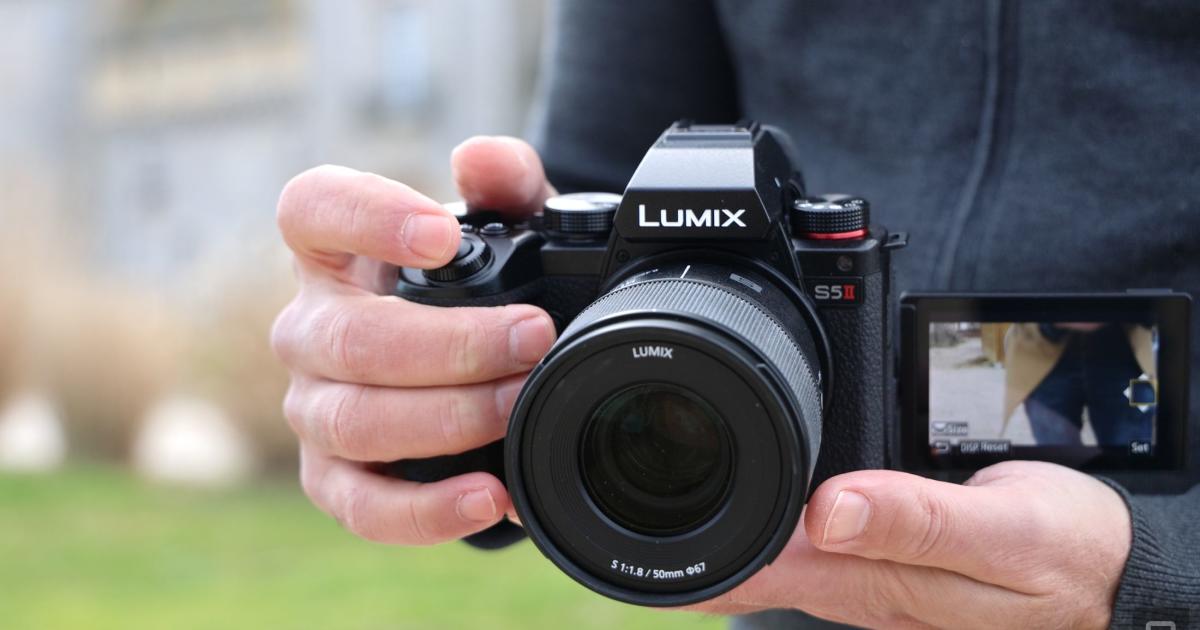In a time when smartphones have dominated the casual photography market, buying a digital camera presents a unique and exciting opportunity. Manufacturers have shifted their focus towards creating technologically advanced cameras with specific uses in mind. Mirrorless cameras, for example, continue to improve in terms of autofocus and video capabilities. Action cameras offer sharp and fluid video, while compact cameras are designed for both tourists and vloggers. DSLRs are also available at incredibly competitive prices. With such a wide array of options, it can be overwhelming to choose the right camera. That’s where we come in. Whether you’re a creator seeking the perfect vlogging camera, an aspiring wildlife photographer, or a sports enthusiast, we’ll assist you in finding the ideal model to match your budget and requirements.
Best mirrorless cameras under $2,000
Best mirrorless cameras over $2,000
Best action cameras
Best compact cameras
Best DSLR cameras
Factors to Consider When Choosing a Camera
There are numerous reasons to choose a camera over a smartphone. Mirrorless cameras, for instance, have larger image sensors that allow for more light, and they offer a wide variety of lenses with superior optics, ranging from wide-angle to telephoto lenses. They also provide better exposure control, natural bokeh, quicker shooting speeds, a physical shutter, and professional video results. However, with this increased quality comes a multitude of factors to consider.
One of the most important considerations is sensor size. As a general rule, larger sensor sizes result in better (albeit more expensive) cameras. Full-frame cameras, such as Sony’s new ZV-E1, the Canon EOS R6 II, and Panasonic S5 II, offer a 35mm film-equivalent size (36 x 24mm), which delivers exceptional image quality, low-light capabilities, and depth of field. However, full-frame cameras can be challenging to work with due to their razor-thin depth of field, whereby the subject’s nose may be in focus, but not their eyes. This can also pose challenges for video shooting.
The next size category is APS-C, available on cameras like Fujifilm’s X Series lineup, Canon’s R10 and R50, and Nikon’s Z50. APS-C is cheaper than full-frame, both in terms of camera bodies and lenses, yet it still offers many advantages, such as decent bokeh, high ISOs for low-light shooting, and relatively high resolution. Additionally, APS-C cameras are ideal for shooting video and are easier to maintain focus compared to full-frame cameras.
Micro Four Thirds (shared by Panasonic and Olympus) is the next step down in sensor size (17.3 x 13mm). While it offers less bokeh and light-gathering capability than APS-C and full-frame cameras, it compensates by allowing for smaller and lighter camera bodies and lenses. With good prime lenses, Micro Four Thirds cameras still provide reasonably tight depth of field for video shooting, with easier focus control.
Type 1 (1 inch) sensors, measuring 12.7 x 9.5mm, are predominantly found in compact models such as Sony’s ZV-1 vlogging camera. Finally, action cameras like the GoPro Hero 11 and DJI’s Osmo 3 feature even smaller sensors (1/1.9 and 1/1.7 size, respectively).
Another crucial factor for photographers is autofocus (AF) speed and accuracy. Most modern mirrorless cameras employ hybrid phase-detect AF systems that allow for rapid focus and fast burst speeds. Furthermore, many models feature AI capabilities such as eye-detect AF for people and animals. Nevertheless, some cameras are slightly faster and more responsive than others in these aspects.
The electronic viewfinder (EVF) and rear display are also essential considerations. Top models boast the sharpest and brightest EVFs, enabling photographers to assess shots accurately before capturing them. Similarly, street photographers benefit from bright and sharp rear displays. A tilting or flipping screen is preferable to maximize shooting angles and versatility.
While DSLRs and mirrorless cameras allow for interchangeable lenses, compact cameras come with fixed lenses. While the latter provides portability, it also means sacrificing certain features. For example, Fujifilm’s X100V has a fixed 35mm-equivalent f/2.0 lens without zoom, whereas Sony’s RX100 V has a 24-70mm zoom but is slower at the telephoto end (f/2.8) and not as sharp as a prime lens.
For videographers, additional factors come into play. Does the camera use “pixel-binning” for video recording or read out the entire sensor? Typically, superior cameras opt for the latter option. Sensor speed is also essential, as slower sensors tend to generate more rolling shutter, resulting in a distracting “jello” effect that distorts video footage. Battery life, handling, and overall feel are other considerations to ensure optimal shooting conditions. The camera’s ability to shoot extended video without overheating or shutting down, support for 10-bit HDR video, and the presence of a microphone and headphone jack (preferably both for interviews) are also important considerations. Lastly, video autofocus performance is a significant factor to ponder.
All of these factors play a role in your decision-making process when choosing a camera. Now, let’s explore the best models available.
The Best Cameras
Best Mirrorless Cameras
Mirrorless cameras currently dominate the market and offer the best options for photographers seeking advanced features. Recently, both Canon and Nikon announced the discontinuation of new DSLR development due to the diminishing advantages of this category, as explained in a recent video.
The main appeal of mirrorless cameras lies in their ability to change lenses according to shooting requirements. Key features to consider include sensor size, resolution, autofocus capabilities, shooting speeds, and video specifications. Sports and outdoor photographers will benefit from fast shooting speeds and accurate autofocus. Portrait and landscape shooters should opt for large sensors and high resolutions for optimal image quality. Content creators, on the other hand, should prioritize features such as flip-out displays, high-end video specifications, and in-body stabilization.
Additionally, price point is a significant factor to consider.
Mirrorless Cameras Under $2,000
Best Mirrorless Camera Under $2,000: Canon EOS R50
Canon’s brand new 24.2-megapixel R50 is my top budget camera pick, offering exceptional photography and catering to the needs of content creators. With burst shooting speeds of up to 15 fps in electronic shutter mode and 4K 10-bit video recording at up to 30p with supersampling and no crop, this camera delivers impressive performance. It is equipped with a fully articulating display and an electronic viewfinder, distinguishing it from other cameras in this price range. Canon’s Dual Pixel AF with subject recognition mode ensures outstanding autofocus capabilities, and the camera even features a popup flash. The only downsides are the lack of affordable quality lenses and in-body stabilization.
Runner-up: Canon EOS R8
Canon’s EOS R8 is priced at just $1,500, offering excellent value for a full-frame camera. Importantly, it is equipped with Canon’s Dual Pixel AF with subject recognition AI and can shoot bursts at up to 40 fps. Its video capabilities are equally impressive, supporting oversampled 10-bit 4K at up to 60 fps. The R8 features a flip-out display, making it an ideal choice for vloggers. However, it lacks in-body stabilization.
Another recommended option: Panasonic Lumix S5 II
For content creators, the Panasonic Lumix S5 II is an excellent choice. It is Panasonic’s first full-frame camera with hybrid phase-detect autofocus, ensuring accurate focus and reduced issues such as focus “wobble.” The camera can shoot sharp 4K 30p video downsampled from the full sensor width or 4K 60p from an APS-C cropped size, all in 10-bit color. It even offers 5.9K 30p capture and RAW 5.9K external output to an Atomos recorder. Additionally, it features a flip-out screen for added convenience.
In conclusion, buying a digital camera in today’s market requires careful consideration of various factors. Mirrorless cameras provide a wide range of advanced features and are the ideal choice for photographers seeking optimal performance. By assessing your specific needs and budgetary constraints, you can find the perfect camera to capture your creative vision.
Denial of responsibility! SamacharCentrl is an automatic aggregator of Global media. In each content, the hyperlink to the primary source is specified. All trademarks belong to their rightful owners, and all materials to their authors. For any complaint, please reach us at – [email protected]. We will take necessary action within 24 hours.

Deepak Sen is a tech enthusiast who covers the latest technological innovations, from AI to consumer gadgets. His articles provide readers with a glimpse into the ever-evolving world of technology.


